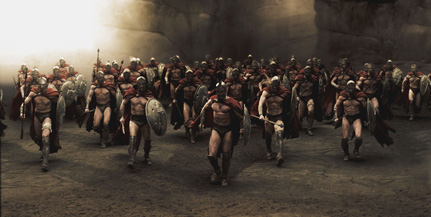|
|
What Went Right: 300By Shalimar SahotaMarch 5, 2012
The film is narrated by one of the soldiers, Dilios (David Wenham) and as such it is subjective. The visual look of 300 enhances the mythical nature of the story, in that this is not a history lesson, this is not a reality that we know; instead it is more a fantastical retelling, the kind of film you wish they put on the school curriculum. In fact, the overall look of the film is probably one of the most important factors contributing to its success. Snyder was intent on capturing the images as close (if not exactly) as seen in the graphic novel, so took Robert Rodriguez’s approach and shot 300 on a digital backlot. Sky Captain and the World of Tomorrow and Sin City were the only other US productions that had previously adapted the same technique and attained wide release. It’s interesting that Miller’s adaptations have proven to be big successes, for whereas Sky Captain was offering outdated thrills, Sin City and 300 offered R-rated excitement, with the marketing for 300 specifically targeting young men that had a thing for comics, video games, sex and violence. If people didn’t know of Miller’s graphic novel, then they at least ought to have been aware of the Battle of Thermopylae. Had they failed history, then just the look of the film was probably enough to sway them into paying for their tickets. Since the turn of the millennium, special effects are now so prevalent that it has become much harder to be truly wowed by what we see on screen. Anyone can add CGI to a film, but understanding the technology and using it effectively is down to the skills of the director and his crew. In 300, the style is so overt that the film is practically saying, “Let’s see you find a condom for this.”
[ View other columns by Shalimar Sahota ]
[ View other What Went Right columns ]
[ Email this column ]
|

|
|
|

|
Friday, November 1, 2024
© 2024 Box Office Prophets, a division of One Of Us, Inc.


